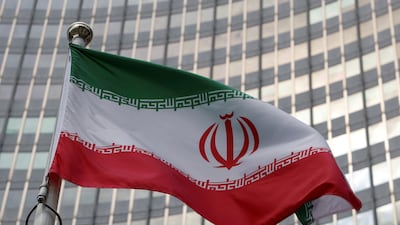Western governments on Thursday warned of a “backwards step” in preventing Iran from obtaining a nuclear weapon, after a report found Tehran has increased its production of enriched uranium.
A report from the International Atomic Energy Agency (IAEA) released this week said that Iran has “increased its production of highly enriched uranium, reversing a previous output reduction from mid-2023“.
The US, UK, France and Germany warned that the findings “will result in Iran tripling its monthly production rate of uranium enriched up to 60 per cent".
“We condemn this action, which adds to the unabated escalation of Iran’s nuclear programme," the joint statement read.
“These decisions demonstrate Iran’s lack of good will towards de-escalation and represent reckless behaviour in a tense regional context.
"We urge Iran to immediately reverse these steps and de-escalate its nuclear programme."
Iran's atomic energy chief Mohammad Eslami played down the IAEA report on Wednesday, saying it showed “nothing new”, Iranian media reported.
“We did nothing new and are doing the same activities according to the rules,” Mr Eslami was quoted as saying.
Highly enriched uranium is anything above 20 per cent, and weapons-grade uranium is commonly considered to have been enriched above 90 per cent, according to the Centre for Arms Control and Proliferation.
Last week, the US said that it was prepared to use “all means necessary” to prevent Iran from gaining nuclear arms.
“Iran should take actions to build international confidence and de-escalate tensions, not continue nuclear provocations that pose grave proliferation risks,” John Kelley, a US political counsellor, told the UN Security Council.
"We remain postured and prepared to use all means necessary to prevent a nuclear-armed Iran."
Tension between Iran and the US has escalated in recent months, as Washington continues to support Israel in its war in Gaza, which has killed more than 21,000 Palestinians with no signs of slowing.
Tehran supports Hamas, the Palestinian militant group that launched a deadly attack on Israel that sparked the war and took 1,200 lives.
Iran also backs other regional militants, such as the Houthis in Yemen, who have escalated tension in the wider region as Israel's western-backed siege in Gaza endures.
Tehran suspended its compliance with limits on its nuclear activities set by a landmark 2015 nuclear deal with major powers, after former president Donald Trump pulled the US out of the agreement in 2018 and reimposed sweeping sanctions.
It has since built up its stocks of enriched uranium to 22 times the level permitted under the deal, AFP said, quoting a confidential IAEA report it saw last month.
Efforts to revive the nuclear deal remain frozen after a breakdown in negotiations last year and subsequent political developments that have led to a further deterioration in relations between the parties.


